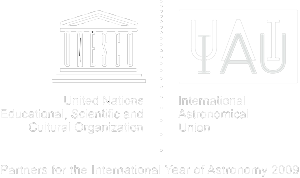The Communicating Astronomy with the Public journal (CAPjournal) often features articles tailored for educators and communicators that teach science to young children. These cover: writing about science for children, face-to-face communication and other media, such television and activity kits. Below is an overview of the most relevant articles.
All science communicators must tackle difficult audiences as part of their jobs, but most would agree that young children are among the most challenging audiences. Freelance science communicator, Lee Pullen, has taught thousands of children about the cosmos and he's helpfully shared his experience with us.
Pullen's CAPjournal article “Ten Tips for Communicating Astronomy with Children” contains a list of simple tips to prepare us for this daunting challenge, beginning with the usual advice “be enthusiastic”. These standard words are particularly relevant when working with a young audience as children will take their lead from you, so it is important to be lively, engaged and interested. Lee also encourages us to push the children to get creative; astronomy is a unique scientific topic for sparking the imagination (aliens, spaceships, foreign worlds). The list goes on to include advise such as: keep things simple, spark discussions and much more.
In the new edition of CAPjounral former science editor of the Universe Awareness project, Sarah Reed, offers us her sage advice on how to be effective when writing for the young in the article “Writing a Space Scoop in Seven Steps”. She may be the new editor-in-chief of CAPjournal, but she still has a place in her heart for children's science journalism. Writing for children is not child’s play, she tells us; but hopefully with her top tips, your writing will soon be inspiring the future Hubbles and Hawkings. Advise includes the basics: keep sentences short, assume no prior knowledge and minimise technical jargon. Plus, Sarah includes some science-specific advice: don't shy away from telling the children how much we don't know about the Universe.
Finally, if you want to branch out from the usual media, Valeria Cappelli and Chiara Di Benedetto, from the INAF Astronomical Observatory of Padua (Italy) have put together an article entitled, “Celestial Themed Cartoons Captivate Children” in which they discuss their experience creating an educational entertainment project for children in collaboration with Disney Television Italy, including a cartoon series, several articles in a Disney magazine and an educational kit, which was eventually distributed to 30 000 children in Italy!
Cappelli and Benedetto explain how a research institute and a major entertainment company were able to work together to form a successful partnership and how to communicate with children in this format. In the article the pair tell us about the importance of choosing characters that children can relate to, using simplified language and creating activities that were both inclusive and inspiring.
More Information
The CAPjournal is a free peer-reviewed journal for astronomy communicators, online and in print. To subscribe to the print or online version please go here: http://www.capjournal.org/subscription.php. This issue in PDF format is available on: http://www.capjournal.org/issues/11/













